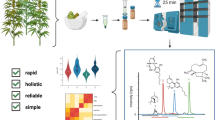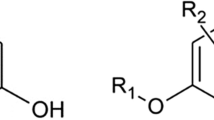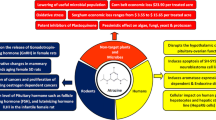Abstract
Association of official agricultural chemists official method was adapted and used to develop analytical method for determination of 76 pesticides residues in persimmon, grape, and pear by concurrent use of liquid chromatography-tandem mass spectrometry. Despite few exceptions in particular matrix, two fortified spiking (100 and 400 ppb) in three matrices gave satisfactory results in terms of accuracy, repeatability, precision, and linearity. Method detection limits (MDLs) were determined using five low spiking and eight replicate samples. MDLs were calculated by multiplying the standard deviation with student t-value 2.998 for n-1 (7) degree of freedom at 99% confident level. limit of quantification were obtained by multiplying standard deviation with 10. Experimental results indicate grape was the most problematic matrix among tested fruits and persimmon the least. Etoxazole is the most problematic pesticide and not applicable in this method. Developed method was successfully applied for the determination of residual pesticides in blindincurred samples.
Similar content being viewed by others
References
Alder L, Greulich K, Kempe G, and Vieth B (2006) Residue analysis of 500 high priority pesticides: better by GC-MS or LC-MS/MS? Mass Spectrom Rev 25, 838–865.
Anastassiades M, Lehotay SJ, Štajnbaher D, and Schenck FJ (2003) Fast and Easy multiresidue method employing acetonitrile extraction/partitioning and “dispersive solidphase extraction” for the determination of pesticide residues in produce. J AOAC Int 86, 412–431.
Anastassiades M, Scherbaum E, Tasdelen B, and Štajnbaher D (2007) Recent developments in QuEChERS methodology for pesticide multiresidue analysis. In Pesticide Chemistry, Crop Protection, Public Health, Ohkawa H, Miyagawa H, and Lee PW (eds.), pp. 439–458, Wiley-VCH, Weinheim, Germany.
Asensio-Ramos M, Hernandez-Borges J, Ravelo-Perez LM, and Rodriguez-Delgado MA (2010) Evaluation of a modified QuEChERS method for the extraction of pesticides from agricultural, ornamental and forestal soils. Anal Bioanal Chem 396, 2307–2319.
Bai Y, Zhou L, and Wang J (2006) Organophosphorus pesticide residues in market foods in shaanxi area, China. Food Chem 98, 240–242.
Gonzalez-Curbelo MA, Hernandez-Borges J, Ravelo-Perez LM, and Rodriguez-Delgado MA (2011) Insecticides extraction from banana leaves using a modified QuEChERS method. Food Chem 125, 1083–1090.
Hao C, Clement R, and Yang P (2007) Liquid chromatographytandem mass spectrometry of bioactive pharmaceutical compounds in the aquatic environment; a decade’s activities. Anal Bioanal Chem 387, 1247–1257.
Húšková R, Matisová E, Hrouzková S, and Švorc L (2009) Analysis of pesticide residues by fast gas chromatography in combination with negative chemical ionization mass spectrometry. J Chromatogr A 1216, 6326–6334.
Jansson C, Pihlsstrom T, Osterdahl BG, and Markides KE (2004) A new multi-residue method for analysis of pesticide residues in fruit and vegetables using liquid chromatography with tandem mass spectrometric detection. J Chromatogr A 1023, 93–104.
Knežević Z and Serdar M (2009) Screening of fresh fruit and vegetables for pesticide residues on Croatian market. Food Control 20, 419–422.
Koesukwiwat U, Lehotay SJ, Mastovska K, Dorweiler KJ, and Leepipatpiboon N (2010) Extension of the QuEChERS method for pesticide residues in cereals to flaxseed, peanuts and doughs. J Agric Food Chem 58, 5950–5958.
Kumari B, Madan VK, Singh J, Singh S, and Kathpal TS (2004) Monitoring of pesticidal contamination of farmgate vegetables from Hisar. Environ Monit Assess 90, 65–71.
Kuster M, López de Alda M, and Barceló D (2006) Analysis of pesticides in water by liquid chromatography-tandem mass spectrometric techniques. Mass Spectrom Rev 25, 900–916.
Lehotay SJ, Maštovská K, and Lightfield AR (2005) Use of buffering and other means to improve results of problematic pesticides in a fast and easy method for residue analysis of fruits and vegetables. J AOAC Int 88, 615–629.
Lehotay SJ, Son KA, Kwon H-Y, Koesukwiwat U, Fu W, Mastovska K, Hoh E, and Leepipatpiboon N (2010) Comparison of QuEChERS sample preparation methods for the analysis of pesticide residues in fruits and vegetables. J Chromatogr A 1217, 2548–2560.
Lesueur C, Knittl P, Gartner M, Mentler A, and Fuerhacker M (2008) Analysis of 140 pesticides from conventional farming foodstuff samples after extraction with the modified QuEChERS method. Food Control 19, 906–914.
Nguyen TD, Yu JE, Lee DM, and Lee GH (2008) A multiresidue method for the determination of 107 pesticides in cabbage and radish using QuEChERS simple preparation method and gas chromatography mass spectrometry. Food Chem 110, 207–213.
Ortelli D, Edder P, and Corvi C (2004) Multiresidue analysis of 74 pesticides in fruits and vegetables by liquid chromatography—electrospray—tandem mass spectrometry. Anal Chim Acta 520, 33–45.
Rasmussen RR, Poulsen ME, and Hansen HC (2003) Distribution of multiple pesticide residues in apple segments after home processing. Food Addit Contam 11, 1044–63.
Venkateswarlua P, Mohan KR, Kumar CR, and Seshaiah K (2007) Monitoring of multi-class pesticide residues in fresh grape samples using liquid chromatography with electrospray tandem mass spectrometry. Food Chem 105, 1760–1766.
Wong J, Hao C, Zhang K, Yang P, Banerjee K, Hayward D, Iftakhar I, Schreiber A, Tech K, Sack C, Smoker M, Chen X, Utture SC, and Oulkar DP (2010) Development and interlaboratory validation of a QuEChERS-based liquid chromatography-tandem mass spectrometry method for multiresidue pesticide analysis. J Agric Food Chem 58, 5897–5903.
Author information
Authors and Affiliations
Corresponding author
Rights and permissions
About this article
Cite this article
Min, Z.W., Lee, J.Y., Son, KA. et al. Development and validation of a quick easy cheap effective rugged and safe-based multi-residues analysis method for persimmon, grape and pear using liquid chromatography-tandem mass spectrometry. J Korean Soc Appl Biol Chem 54, 771–777 (2011). https://doi.org/10.1007/BF03253158
Issue Date:
DOI: https://doi.org/10.1007/BF03253158




